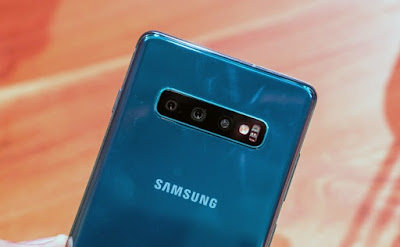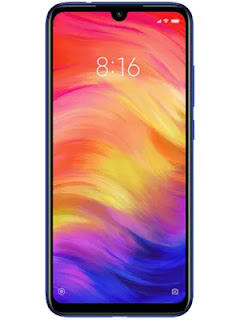The three cameras and a flash forms a square!!!
The past duo years have been a strong period for smartphone cameras; and the Chinese giant
Huawei has really put its bit to push forward the mobile photography, it has taken a few
considerable years but the esteemed partnership between the company and German optics
brand Leica, finally seems to be bringing out impressive results. It should be no surprise that
the Mate 20 Pro has impressive photography skills over its rivals and has improved a ton over
its predecessor Huawei P20 pro.
The main 40 megapixel f/1.8 sensor, the 20-megapixel f/2.2 ultra-wide sensor and a
8-megapixel f/2.4 telephoto sensor for zooming; there’s also a dual-tone LED flash rounding
out the package that’s organized in a 2×2 grid on the rear of the device, gives a attractive look
to the handset.
The most obvious change from the Huawei P20 Pro is that ultra-wide sensor, replacing the
monochrome sensor that Huawei had been using for a while. The reason behind this switch is
understood: Huawei spokesperson said there’s enough data and detail captured in the
40-megapixel sensor to make the extra info collected by the black and white sensor useless.
That seems to be a clever move, and it’s the one that pays off more in practice.
The duo having a normal focal length, ultra-wide and telephoto sensor presents a ridiculous
level of versatility with your pictures. By default, the Mate 20 Pro utilizes pixel-compressing
technique to use those 40 megapixels to produce a 10-megapixel image. You’ll get the best
shots out of the 40-megapixel main sensor and can shoot purely at the same,but this limits the number of features available; for instance, you can’t zoom and leaves you with very large file sizes.
Telephoto sensor: You don’t lose much when you zoom
By default, another option ‘on’ is the Master Artificial Intelligence(AI) system, which alters the look of the picture in the process by making use of the dual
neural engines inside the Kirin 980 to detect scenes and objects. We found this AI boosts
colors,smooths faces and adds some minor image sharpening to landscapes; though,nothing
is too strong, generating amicable pictures.
The Master AI will also suggest at appropriate times when the user should switch across the assorted modes available. Pointing the camera at a person, will enable portrait mode; pointing it at a bridge,will automatically switch to ultra-wide. We’ve been rigorously stirred by, that how well it adjudges the subjects presented to it in ‘my viewfinder’.
At occasions, the Master AI makes so many unnecessary changes to an image, often making
greens and reds look unnatural, boosting blues in the sky too far. Though, some might
probably prefer these “Instagrammable” specific changes.
There’s an option to turn the feature off completely, if one really dislikes the AI changes, yet it
will be advisable against the aforementioned, since it really leaves your snaps lacking in
dynamic range and color and flat in appearance.
Ultra-wide adds some more versatility to your shots. These shots can suffer from some loss
of details around the edges but in general, colours and details are great. The only one of the
bunch to be optically stabilized is the 8-megapixel telephoto sensor (the all others rely on
Huawei’s software-based EIS) and that is what helps to minimize hand-shake when taking
portraits. Furthermore, the results are mostly very good, with precise cut-outs around
everything out there.
Videography
The Mate 20 Pro camera is less efficient in video capturing and selfies. Video recording, is
nothing more than adequate. The front camera,too, that’s a 24-megapixel shooter delivers
relatively poor selfies; it feels as all those high rated megapixels are being wasted. There’s no
4K at 60fps and the image stabilization is less effective in this segment.
Low light photography
Low-light shots from the Mate 20 Pro really impressive, as the colors are kept intact and look
great. The dedicated Night mode for capturing a photo of still objects or building at night
generates amazing output.even with the Night Mode off you will get a more natural shot and
that would still look great. In dark situations, even zooming works well, thanks to the Telephoto
sensor for the same. Night Mode can struggle a bit with movement.
To sum up, Huawei Mate 20 pro is an excellent camera phone with great features and above
all an efficient processor that makes it a perfect choice for the users, but beware it comes with

















